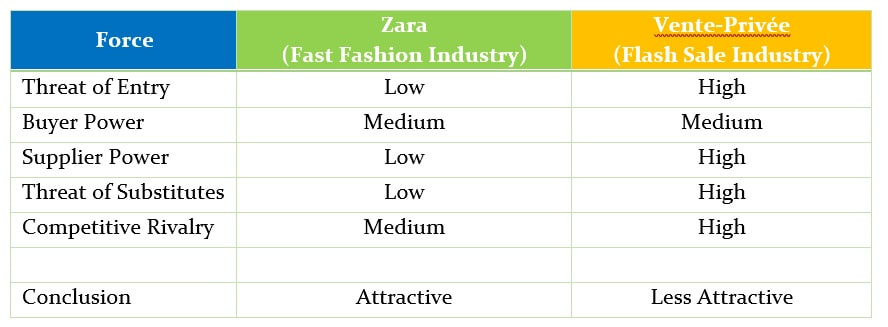
May 20, 2018
Interested in learning more about scarcity & flash (event) sales business models?
If so, then the following #MOOC includes timely & relevant information:
https://www.coursera.org/learn/startup-financing-without-vc/home/welcome Problem Statement
Using the market and industry portions of the seven domains framework to structure a response as to whether a scarcity apparel retailer like Zara or a flash sales apparel retailer like Vente Privée is or is not an attractive opportunity to start in India today.
Terminology
Zara is considered a brick-and-mortar version of the scarcity model, whereas Vente-Privee, the inventor of the online version of the scarcity model which is referred to as a flash sales (or event sales) retailer.
Response
The seven domains model brings 7 key perspectives together to offer a way to assess and shape market opportunities as well as the adequacy of what a management team brings to the table as individuals and as a group.
Market Analysis
The seven domains framework defines a market as “consists of a group of current and/or potential customers with the willingness and ability to buy products – goods or services – to satisfy a particular class of wants or needs. Thus, markets consist of buyers – people
or organizations and their needs – not products.” And, analysis must be made at both macro (broad, market-wide) and micro (particular to a specific segment, one customer at a time) levels. The macro/micro distinction is important because the assessment questions differ.
Marco-Market Analysis
According to the PwC report the e-Commerce market in India “has grown three times in four years to nearly 12.6 billion USD in 2013. And, various industry estimates project that the sector will further growth five to seven times over the next four to five years. Online retail, while today representing a small fraction of the e-commerce space is one of the fastest growing segments.” Hence, the macro-market in India is a very attractive one for retailers who offer apparel online (such as Zara and Vente Privée). This is the case even though there is a challenge to ensure that the supply chain needs of specific product segments rely heavily upon nascent logistics and delivery infrastructure support in India (at the time of the referenced PwC report).
Micro-Market Analysis
Of course, no matter how large and fast-growing a market may be, most successful business rather than targeting the entire market, identify a much smaller segment of customers within the overall market. Using this scope, both Zara and Vente-Privee target the mass-market consumer albeit Vente-Privee has a much smaller geographic market footprint than Zara. And, indeed, in 2014 Vente-Privée USA did shut down operations due to market saturation (described below) as well as operational miscues as described in Fortune Magazine’s article titled, “Vente-Privée USA to shut down.” (3)
Moreover, secondary research indicates that India consumers do consider fashion as a key dimension of apparel choice, the typical Indian luxury shopper is more value-conscious according to the trade article, “Chinese and Indian Consumers Want Different Things From Luxury.” Therefore, the Zara model is more relevant than the most luxury-focused Vente-Privaee flash sale model in terms of customer-oriented preferences.
Macro-Industry Analysis
Unlike a market which consists of buyers, an industry consists of sellers – typically commercial organizations – that offer products or categories of products that are comparable to and close alternatives for one another. In the late 1970’s, Michael Porter characterized five forces that are powerful determinants of industry profitability which are arranged in the table below.

Although Zara and Vente-Privee are both considered retailers there is a central distinction even at the macro level. From my analysis, I conclude that the fast fashion industry that Zara competes in is pointedly more attractive than the online flash sales industry in which Vente-Privee competes. The distinction can be further clarified when considering the micro-industry level.
Micro-Industry Analysis
Originally, flash sales merchants like Vente-privee solved apparel manufacturers’ problems of fashion mistakes. Manufacturers would over produce and Vente-privee and its rivals would buy it at closeout prices. And then they would re-sell it in flash sales events. However, eventually two changes materialized. The apparel manufacturers were able to better optimize their forecasts, inventories and supply chains in order which resulted in fewer closeouts. And, concurrently, the quantity of flash sales entrants was expanding rapidly, creating swelling demand for the closeouts that the manufacturers now had a reduced amount of.
Other micro-level industry competitive and economic factors include the following and favor Zara much more so than Vente-Privee:
Conclusion
In conclusion, based on the market and industry analysis above, I would conclude that the a Zara-like business is well suited to address the India consumer market whereas a pure Vente-Privee flash sales model is less likely to garner success.
References